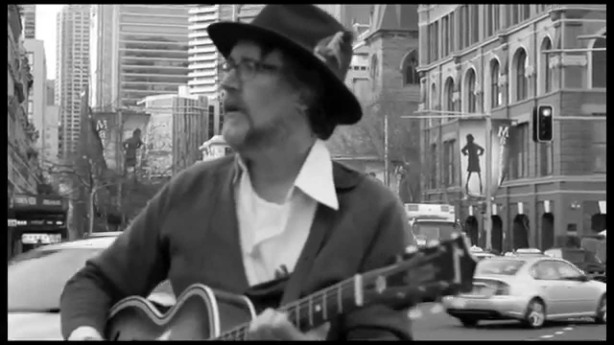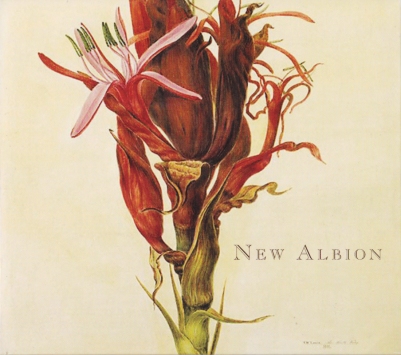Recently I took one one of those Facebook ‘challenges’ where one posts various pet picks every day. This one was ‘7 Songs in 7 Days’ – selecting songs or pieces of music which are significant to you.
Of course this could be interpreted in almost infinite ways, so I thought I would keep it simple and post seven songs that shaped me over the early part of my life as a fan and musician. I also included a song which shows that I continue to be shaped, maybe a little less cataclysmically, by music I hear up to the present day.
_______________________________________
#1: ‘Spirit in the Sky’ by Norman Greenbaum
1970. I was 13, very geeky and more interested in model hot rods and Marvel comics than music.
Then this thing came on the radio.
To this day I wonder what possessed the producer to underpin this sappy hippie-happy-clapper song with such a malevolent, heavy, fuzzed out boogie. Spirit of the times I guess.
Whatever… I was hooked. Something about the sound of the guitar on this song – beyond the lyric (daft) or melody (perfunctory) – just got inside me and made 13 year old me feel strange, a little scared and yet, good. (By the time I took drugs a couple of years later, I had already felt their delicious disconnect through musical and visual art experience).
I dreamed about this song and waited and waited for it to reappear on 2SM and when it did, I stood before the radio in a trance for 3:47. There was nothing else like it on the radio, there was nothing else like it in the world.
Of course, as with most drugs, you need more, and more, and stronger. So the search was now on for The Sound. I didn’t have to wait too long…
_______________________________________
#2: ‘Whole Lotta Love’ by Led Zeppelin
Through a strange quirk of misread marketing, disc jockey taste and the wrath of Odin, Led Zeppelin’s five and a half minute ‘Whole Lotta Love’ also came out of our radios in 1970.
Intended to be the B-side of the one vaguely ‘pop’ single on Led Zeppelin II, ‘Livin’ Lovin’ Maid’, ‘Whole Lotta Love’ was (strangely) preferred by radio station programmers. Once again, spirit of the times. Soon there was a trimmed down version being played but not before the full heavyweight opus had done irreversible damage to my child’s fragile eggshell mind.
A toughened up reading of Muddy Waters’ ‘You Need Love’ (or callous racist rip-off, your call), ‘Whole Lotta Love’ remains to this day, the template of hard rock for me. A full, phat and badass bottom end of bass drums guitar, with sky scraping vocal and nothing much in between (which is why I prefer Maiden to Metallica any day, and love working with women vocalists in my current bands).
Too much wonder in this mini-symphony: the scraping slide guitar figure in the chorus, the kick in the balls when JPJ’s bass enters, Jimmy Page’s scratching and spitting guitar break, Robert Plant’s animalistic howls and choir-girl sighs and John Bonham, just John Bonham.
And the middle bit. You know, the bit where your mind splits in two and sonic magma runs out.
The whole thing roars like a machine: dead on in purpose, yet frightening in potential. Chills me to this day.
Did its European-ness awaken some Germanic race-memory in me? Did it clad a scared schoolboy in Asgardian armour to do battle with Trinity Grammar School? Maybe – all I know is it knocked my fucking socks off.
After ‘Whole Lotta Love’ I was gone. What would the wond’rous radio ensnare me with next? It was about to get strange…
_______________________________________
#3: ‘All Along The Watchtower’ by Jimi Hendrix
Still too young for a record player, I depended on the radio for my moments of musical satori. And there, among the Mary Hopkin and Brotherhood of Man pop fluff would come some dark jewels that made me shiver in my boots.
Jeff Beck’s ‘Hi Ho Silver Lining’ (if mainly for the grinning sarcasm of his overloaded guitar break), Melanie Safka’s ‘Candles in the Rain’, The Move’s ‘Blackberry Way’ and The Four Top’s ‘Reach Out’ made life worth living, but it was ‘All Along The Watchtower’ that really made my hair (short, back and sides that it was) stand up.
Jimi Hendrix came to me fully formed, godlike and alien. His name alone was future-primitive and his music was something I had strangely always known, down in my bones. Ancient, flamboyantly filigreed and above all, fucking trippppppy. When I finally saw a picture of him, I loved him even more.
Producer Chas Chandler’s vision for this nightmarish Dylan tune was widescreen with sets by Dali and lighting by Cocteau. And Hendrix does it to perfection – his Dylanesque droop at the end of every line, his stoned but wise delivery, his space-ace blues lines throughout.
His guitar break seems to be a show-reel: whammy bar dips, wah-wah retorts and Curtis Mayfield-style lead-rhythm chops. Like the best late-period Beatles, Hendrix and Chandler fit almost too much in and it all works, every note.
A couple of years later, my mother threatened to jump out the window if I played ‘Voodoo Chile (Slight Return)’ again, that loud. It made me renew my vows to Hendrix, as I have done regularly my whole life.
Oh, and it also made me want to get a guitar. But first, I would have to own a small Dansette-size record player. And a David Bowie LP…
_______________________________________
#4: ‘Rock ‘n’ Roll Suicide’ by David Bowie
Bowie was our Beatles.
I was born a little too late for the first flush of Beatlemania and only came upon them after they had gone ‘serious’ and split up. The void was filled by Bowie.
Bowie, like the Beatles, was such a perfect Pop creation, and so utterly of his time that he became an iconic object of adoration for an entire generation, equal in fame and influence to the Fab Four.
Importantly, as with the Beatles, his art not only was blindingly brilliant and challenging, but also consistently led the pack, effortlessly breaking new ground with each new quantum release.
It has been said that Bowie was not more than a clever bower-bird, picking through the Twentieth Century and modelling the scraps and bits into new and shiny shapes. Even if that is true, which it may well be, those shapes blinded us to all else and gave us an almost religious hope.
I finally had a tiny, mono record player and my second album was The Rise and Fall of Ziggy Stardust and The Spiders from Mars, for Christmas. ‘Rock ‘n’ Roll Suicide’, from the Ziggy Stardust album, has that disconnected, collage feeling. Bowie sings from a Ballardian dead-night dystopiascape, yet, as the song rises, the feeling of hope rises.
Even though I was a straight little schoolboy and he was something from another planet, I felt – as i lay in the dark, playing this over and over – that he was speaking directly to me, and me alone. It is what I have in common with One Direction fans and indeed anyone who has become besotted with a Pop artist. Musical worth really comes a distant second to such ecstasy.
But soon I would have a Guitar. And my days as a shining-eyed fan would be numbered, as I would become a Musician. Sadly, after that, I could never really listen to music again the same, simple and sweet way.
Of course, it was all Frank Zappa’s fault…
_______________________________________
#5: ‘It Must be a Camel’ by Frank Zappa
Studying jazz and jazz-fusion guitar with Australian guitar shaman, John Robinson opened me up to music that buzzes me to this day.
All I wanted to do was play like the guy in Steely Dan but Robbo put me through the ringer – Boulez, Stravinsky, Schoenberg, Berg. Heavy shit, Jim. And I greedily gobbled the lot and begged for more.
He also got me listening deeply into Frank Zappa – not the ‘comedy group’ stuff that had us in stitches as we loaded the next bong, but Zappa as a composer and musical mind.
‘It Must be a Camel’ is from the Hot Rats album and when I first ‘got’ it, it moved me deeply and fundamentally, as it does to this day. It is extraordinarily beautiful, yet of a beauty that only exists in its own world. If the mark of genius is to envision and create something that has not existed before, then ‘It Must be a Camel’ is that.
Rhythm, harmony and melody are pure Zappa and the band play it as if they jam this shit every day (gold star to drummer John Guerin, Joni Mitchell’s beau at the time – dig his drum break: tuned tom deeeeelite).
Zappa’s personal quirks and curdled world-view seemed to make him shy away from writing more swooningly beautiful music like ‘Camel’ in favour of jarring or shocking his listeners – but when he did (‘Watermelon In Easter Hay’) he could bring you to tears.
Through listening to this stuff, I became infected with that malady called Jazz. It took me a long time to fully recover…
_______________________________________
#6: ‘Funky Tonk’ by Miles Davis
I really took to jazz while I was studying with Robbo – I loved the harmonies, scales, rhythmic mathematics of it all. The stars of jazz blew my mind – Coltrane, Monk, Bud Powell, Wayne Shorter – and turned me into a kind of jazz zealot who would sniff dismissively at rock music and berate people for not knowing who the drummer was on ‘Milestones’. Yep, a royal pain in the jazz ass.
I had fallen in love with the Miles Davis Quintet’s albums Working, Steaming, Cookin’ and Relaxing and for Christmas asked my Dad for anything by Miles Davis – thinking that it would be more of the same: toughly swinging post-bop, elegant and sharp.
It wouldn’t be the first time Miles would throw me for a loop.
What Dad unwittingly bought me (at our local record shop!) was LIVE-EVIL, a cauldron of wigged-out electric, free rock that could not have been further from ‘Relaxing’. I still remember the jolt it gave me: I was all-at-sea, with this music thrashing and crashing around my ears.
Miles plays his trumpet through a wah-wah, the band leaps across hot coals. He had said to them “If I hear you playing any of that jazz shit, you’re fired…’
The utterly wildness and ‘fuck you’ element in this music shocked something out of my system: after I heard it, I was never the same again, musically, or personally – it seemed to express a permission to truly do your own actual thing. In spades.
My jazz nerd self realised I wasn’t in Kansas any more, and for the rest of my life, I have gone wherever Miles has led me…
_______________________________________
#7: ‘Pyramid Song’ by Radiohead
The last band that blew me away with any great force was Radiohead. And mainly the two very inspired albums they made within a few months of each other in 2000-2001, Kid A and Amnesiac.
The sense of adventure I took from these incredibly creative and idiosyncratic albums was the same as I felt from when I first came across Pink Floyd.
Radiohead seem to use every trick in their trick-bag, musically and production-wise on Kid A and Amnesiac: they both crackle with electronica and whim. And it all works exquisitely and elegantly.
‘Pyramid Song’ does not go for any sort of electronic palette, but simply uses piano, bass, drums and orchestral strings. Its stately grandeur rises from the urban space-port of Amnesiac like a cloud-castle.
I finish my seven days with this anthem to sorrow and beauty.

